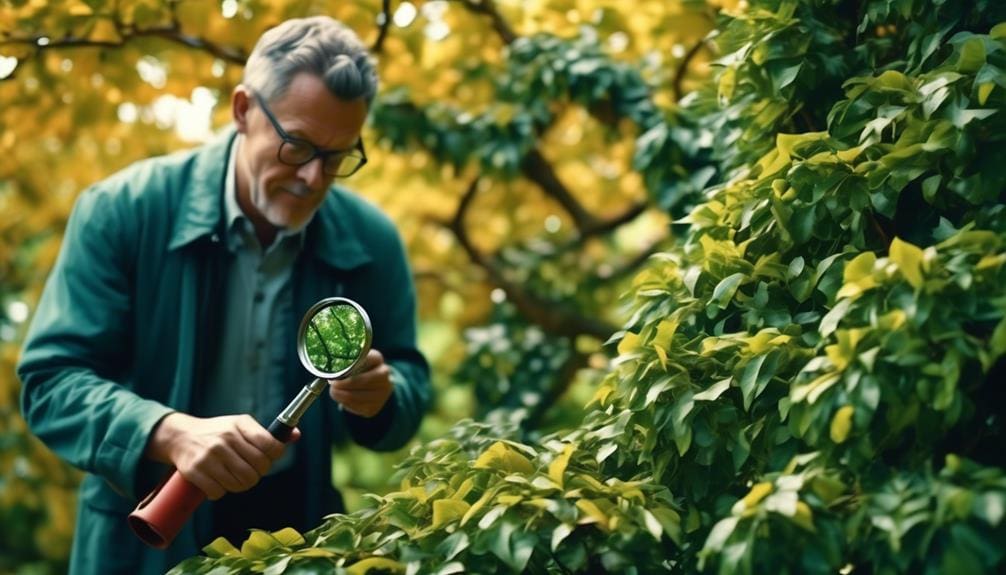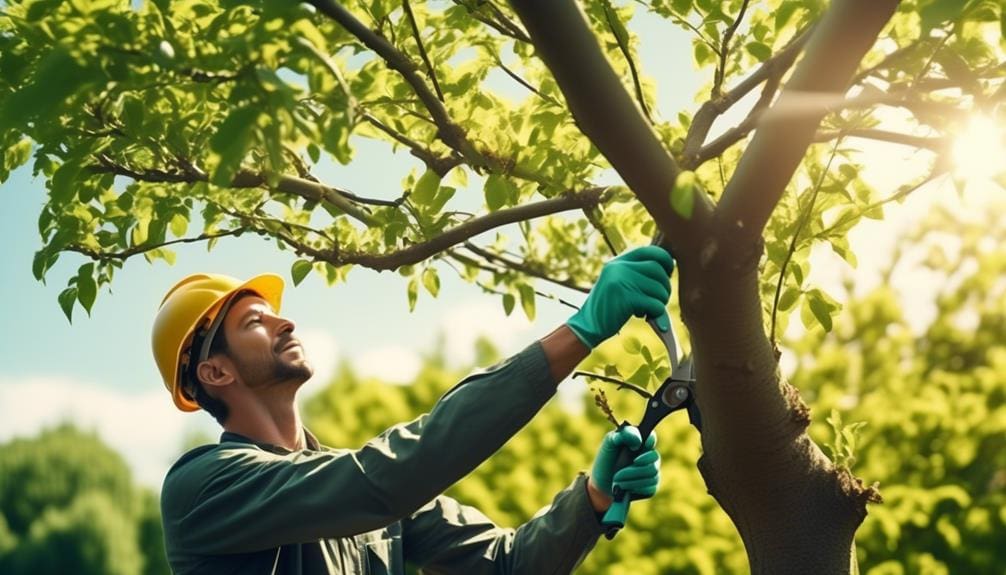Interviews with Experts
Trim Trees in Growth’s Prime Season
We prune, we shape, we protect—these are the principles we abide by when tending to our leafy companions during their most vigorous growth phases. As arborists with a keen eye for the vitality of trees, we’ve come to appreciate the delicate balance between nurturing growth and ensuring the longevity of the tree through strategic trimming.
While it’s tempting to snip away at the first sign of unruly branches in spring or summer, we must tread carefully; too much enthusiasm with the shears can lead to unintended consequences. Join us as we explore the intricate dance of pruning in the prime season, where each cut we make can either bolster a tree’s health or expose it to unforeseen risks.
Let’s uncover together when the shears should be wielded and when they should be withheld, and in doing so, ensure that our trees continue to thrive for seasons to come.
Key Takeaways
- Deciduous trees require careful pruning during their growth season.
- The dormant season for deciduous trees is from November to March, and pruning during this period promotes optimal wound healing.
- Assessing the tree’s health pre-pruning is essential to identify any damage or disease and reduce the risk of further harm.
- Scheduling tree trimming during late winter or early spring allows for rapid healing and minimizes the risk of disease and pests.
Understanding Deciduous Tree Growth
Deciduous trees undergo a dynamic growth cycle, entering a period of vigorous development during the growth season that necessitates careful pruning to maintain their health and structure. We recognize that the prime growing season for these trees is a critical window.
The dormant season, typically spanning November through March, is often the best time to prune, as it minimizes the risk of pest infestations and diseases, while promoting swift wound closure.
As experienced arborists, we’re keenly aware that pruning in early April or just before the first signs of growth can prevent undue stress. We use precision pruning tools to ensure we don’t exceed the recommended live branch removal percentages.
Summer pruning should be approached with caution, especially in blooming species, to avoid diminishing their bloom potential.
Identifying the Dormant Season
While we prioritize early spring for careful pruning, it’s equally important to pinpoint the dormant season, typically from November through March, when trees are at rest to ensure optimal wound healing and reduced disease risk.
As experienced arborists, we recognize this period as the best time to trim. Trees aren’t actively growing, which means pruned branches and wounds can seal more efficiently, without the stress of full metabolic activity.
Pruning during these cooler months also minimizes the threat of pests and diseases, which are less active and therefore less likely to infest or infect fresh cuts.
Assessing Tree Health Pre-Pruning


Before pruning begins, it’s crucial to thoroughly assess the tree’s health, searching for any indicators of damage or disease that might dictate the extent and method of pruning required. We look at the tree’s total appearance for signs of stress, check for dead branches, and identify any areas of disease or pest infestation. It’s a good time to take note of the tree’s canopy density and symmetry, as this can significantly influence our pruning approach.
Assessing tree health pre-pruning, we make sure to reduce the chance of further harm. It’s here where certified arborists that live for providing professional and personalized service shine. With a keen eye, we evaluate the tree’s growth patterns and environmental stress factors, ensuring we prune trees responsibly and effectively, preserving their vitality and your freedom to enjoy a healthy landscape.
Scheduling Optimal Trimming Times
Having assessed the tree’s health, we now focus on pinpointing the best times for trimming to ensure the best outcomes for growth and protection against pests.
Late winter or early spring offers your tree its best chance to heal rapidly post-pruning. It’s a rule of thumb to trim trees when they’re dormant to minimize the risk of disease and pest infestation. However, certain species like maple, walnut, and birch should be pruned in late spring or early summer to avoid sap bleeding.
We recommend scheduling an arborist to trim your trees when they’re least vulnerable. Although trees can be pruned in winter, vigorous growth in spring helps wounds close swiftly. Ultimately, to keep your tree robust and healthy, it’s essential to time trimming operations to align with their natural growth cycles.
Best Pruning Practices Revealed


To ensure the health and vitality of trees, we adhere to best pruning practices, which include strategic timing and precise cutting techniques. We pride ourselves at Davey Tree on providing personalized service from certified arborists who understand that the dormant season, especially winter and early spring, gives your trees the best chance to thrive.
Our latest tips to keep your outdoor space flourishing involve pruning before budding occurs, to enhance the tree’s spring bloom potential. However, we avoid trimming oak trees during this sensitive period to prevent disease risk. For species like maple, walnut, and birch, we recommend late spring or early summer pruning to minimize sap loss.
Trust in Davey Tree specialists to safeguard the well-being of your cherished green assets.
Conclusion
In conclusion, we understand that timing is critical for tree trimming.
While spring and summer pruning can be beneficial for shaping and removing unwanted branches, it’s imperative to perform it judiciously to mitigate infection risks.
We advocate for the dormant season as the safest period for extensive trimming.
By adhering to best practices and sanitizing our tools, we ensure the longevity and health of trees, leveraging our expertise to maintain their vigor and aesthetic appeal.


Hello there! I’m Logan Foster, the green-thumbed social media marketer behind the vibrant world of 1800TreeGuy.com. With roots firmly planted in arboriculture, I’ve branched out to help clients cultivate their dream outdoor spaces, one leafy canopy at a time. My knack for nurturing nature is more than a profession—it’s a way of life.
When I’m not talking trees and teaching the art of arboreal care, you can find me cheering on the Bulldogs—my alma mater’s pride and my forever team. My environmental studies there didn’t just teach me about ecosystems; they instilled a lifelong passion for protecting our planet.
Off the clock, I’m an adventurer at heart. Whether it’s trekking the Appalachian trails, pedaling down a mountain path, or crafting guides to share the wonders of the wild, I’m happiest with soil under my nails and the sun on my face. And let’s not forget Yoda, my pug sidekick. He may not have mastered the art of stillness, but his joyful grins are my daily dose of happiness.
I’m all about making connections—between people and the great outdoors and between my clients and their ideal landscape visions. My approach is personal; every tree has a story, and every garden reflects its caretaker.
If you want to green your scene or share in my outdoor escapades, give me a shout on Instagram or Facebook. Let’s cultivate a conversation and grow a community rooted in a love for the lush life.







